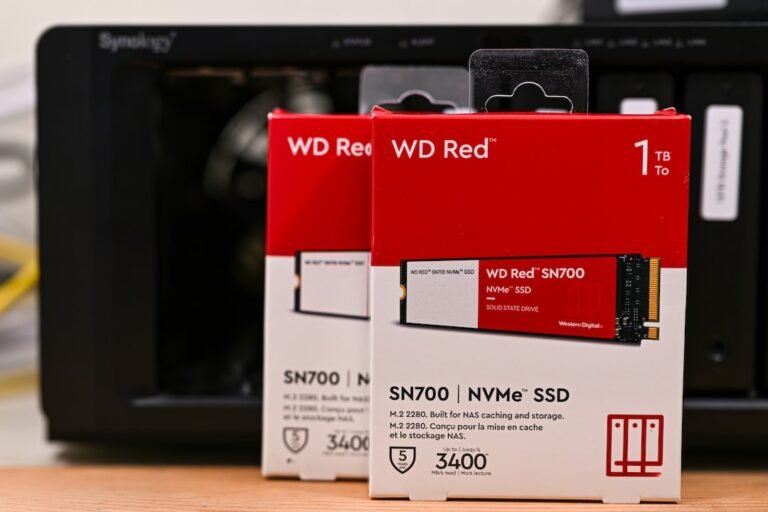Introduction
Welcome to this comprehensive guide on setting up a reliable home network and configuring your router. In our increasingly connected world, having a stable and secure network is essential for everything from streaming movies to working from home. But how do you ensure a strong and reliable connection? How do you optimize your router settings for the best performance? In this guide, we will answer these questions and provide you with valuable tips and insights for setting up your home network like a pro.
Why is Home Network Setup Important?
Before we dive into the nitty-gritty of router configurations, let’s take a moment to understand why a solid home network setup is so important. Imagine trying to stream your favorite TV show only to be interrupted by constant buffering or experiencing a drop in video call quality just when you need it the most. Frustrating, right? A reliable home network setup ensures that such issues are minimized, allowing you to enjoy uninterrupted connectivity and seamless online experiences.
Benefits of a Reliable Home Network Setup
A reliable home network setup offers various benefits, including:
- Stable and fast connection: A well-configured home network ensures a stable and fast connection, allowing you to browse the internet, stream media, and play online games without interruptions.
- Seamless connectivity: A properly set up network enables seamless connectivity between all your devices, making it easier to share files, stream media, and access network resources.
- Enhanced productivity: With a reliable home network, you can work from home efficiently, attend virtual meetings with ease, and collaborate seamlessly with colleagues.
- Optimized streaming experience: A solid network setup ensures smooth streaming of movies, TV shows, and music without buffering or lag, providing you with an immersive entertainment experience.
- Secure connection: A properly configured network adds an extra layer of security, protecting your devices and personal information from unauthorized access.
Now that we understand the importance of a reliable home network setup, let’s dive into the process of configuring your router for optimal performance.
Understanding Your Router
Your router acts as the gateway between your devices and the internet, making it a crucial component of your home network. It connects your devices to the internet service provider (ISP) and allows them to communicate with each other. Before we get into the nitty-gritty of router configurations, let’s familiarize ourselves with the key components and terminology associated with routers.
Router Components
1. WAN Port
The Wide Area Network (WAN) port on your router is where you connect the Ethernet cable from your ISP modem. This port enables your router to receive the internet signal.
2. LAN Ports
Local Area Network (LAN) ports act as connectors for your devices, such as computers, game consoles, and smart TVs. These ports allow devices to communicate with each other within your network.
3. Wi-Fi Antennas
Most modern routers come with built-in Wi-Fi antennas, which enable wireless connectivity for your devices. These antennas transmit and receive signals, allowing devices to connect to the internet without the need for physical cables.
4. Power Button and LED Indicators
The power button allows you to turn your router on or off, while LED indicators provide information about the router’s status. These indicators typically include lights for power, internet connectivity, Wi-Fi, and LAN ports.
Router Terminology
To make things easier, let’s go over some common terms you’ll come across when configuring your router:
- SSID: Stands for Service Set Identifier, which is the name of your Wi-Fi network that appears when you search for available networks on your devices.
- Password: A security measure that prevents unauthorized access to your Wi-Fi network.
- IP Address: Internet Protocol Address is a unique numeric label assigned to each device on a network. It helps devices communicate with each other.
- Gateway: The IP address of your router, which serves as the entry point to your home network from the internet.
- Firmware: The software embedded in a router that provides the necessary functionality and features. It’s important to keep your firmware up to date for optimal performance and security.
Now that you have a basic understanding of router components and terminology, let’s move on to the actual setup and configuration process.
Home Network Setup
Setting up a reliable home network involves several key steps. In this section, we will walk you through the process, from connecting your router to ensuring a secure and optimized network.
Step 1: Hardware Setup
- Choose the right location: Place your router in a central location, away from obstructions like walls or metal objects, to ensure optimal coverage throughout your home.
- Connect the modem to the WAN port: Use an Ethernet cable to connect your ISP modem to the WAN port on your router.
- Power on the router: Plug your router into a power outlet and turn it on using the power button. Wait for it to boot up and establish a connection with your ISP.
Step 2: Accessing Router Settings
To access your router’s configuration settings, follow these general steps:
- Connect to the router: Connect your computer or device to the router either using an Ethernet cable or via Wi-Fi.
- Open a web browser: Open a web browser like Chrome, Firefox, or Safari on your device.
- Enter the router’s IP address: Type the router’s IP address in the browser’s address bar. The default IP address is usually provided in the router’s manual or can be found on the manufacturer’s website.
- Enter login credentials: Enter the default username and password for your router. Again, these credentials can usually be found in the manual or online. If you’ve changed the credentials previously, use those instead.
Once you’ve successfully logged in, you’ll have access to your router’s configuration settings.
Step 3: Configuring Router Settings
Now that you’re in the router’s settings page, you can start configuring it for optimal performance. Here are some key settings to consider:
- Change the SSID and password: Set a unique SSID and a strong password to secure your Wi-Fi network. Avoid using default names or easy-to-guess passwords.
- Update the firmware: Check for firmware updates on the manufacturer’s website and update your router’s firmware if necessary. This ensures you have the latest features, bug fixes, and security enhancements.
- Choose the appropriate wireless channel: Selecting an unused or less congested wireless channel can help improve the performance and reliability of your Wi-Fi network.
- Enable encryption: Enable WPA2 or WPA3 encryption to protect your network from unauthorized access. This ensures that only authorized users can connect to your network.
- Set up guest network: If your router supports guest networks, consider enabling this feature to provide separate Wi-Fi access for visitors without giving them access to your main network.
- Configure Quality of Service (QoS): QoS prioritizes certain network traffic, such as video streaming or online gaming, over others, ensuring a smooth experience for bandwidth-intensive applications.
- Enable firewall and other security features: Activate the built-in firewall and other security features provided by your router to protect your network from external threats.
Remember to save your settings before exiting the configuration page.
Conclusion
In conclusion, creating a reliable home network and configuring your router is essential for optimal performance and seamless connectivity. By following the steps outlined in this comprehensive guide, you can ensure a stable and secure internet connection for all your devices. Remember to choose the right location for your router, update the firmware regularly, secure your Wi-Fi network, and configure additional settings such as QoS and firewall. With these best practices in place, you’ll be well on your way to a hassle-free network setup.
FAQ
Here are some frequently asked questions about home network setup and router configurations:
| Question | Answer |
|---|---|
| How do I troubleshoot my home network? | Check out our article on router troubleshooting for a comprehensive guide on diagnosing and fixing common network issues. |
| What measures can I take to secure my network? | We have a detailed guide on wireless router security that covers tips and best practices to keep your network safe. |
| Can I use a router for gaming? | Absolutely! We have a gaming router buying guide that can help you pick the right router for an optimal gaming experience. |
| Should I consider using a mesh Wi-Fi system? | Mesh Wi-Fi systems offer extended coverage and improved performance. Learn more in our article on mesh Wi-Fi systems. |
| Are there routers specifically for fiber internet? | Yes, we have an article on fiber internet routers that explores routers designed for high-speed fiber internet connections. |
Further Reading
For more in-depth information on reliable home network setup and router configurations, check out the following resources:




